
The Prioninae are a subfamily of Cerambycidae. They are typically large (25–70 mm) and usually brown or black. The males of a few genera sport large mandibles that are used in fights with other males, similar to stag beetles. These beetles are commonly nocturnal and are attracted to light. The majority of the Prioninae whose biology is known are borers whose larvae feed on rotting wood or roots.

Lamiinae, commonly called flat-faced longhorns, are a subfamily of the longhorn beetle family (Cerambycidae). The subfamily includes over 750 genera, rivaled in diversity within the family only by the subfamily Cerambycinae.

Cerambycinae is a subfamily of the longhorn beetle family (Cerambycidae). The subfamily has a world-wide distribution including: Asia, Europe and the Americas. Within the family, the only subfamily of comparable diversity is the Lamiinae.
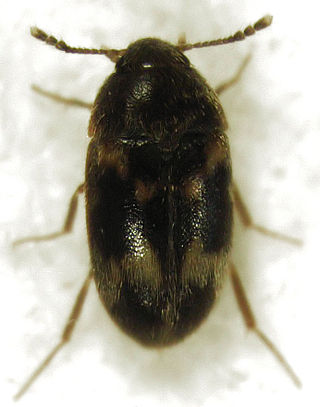
The Mycetophagidae or hairy fungus beetles are a family of beetles in the superfamily Tenebrionoidea. The different species are between 1.0 and 6.5 mm in length. The larvae and adults live in decaying leaf litter, fungi, and under bark. Most species feed on fungi. Worldwide, the 18 genera contain around 200 species.
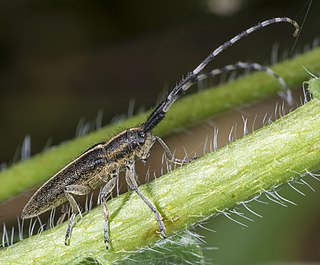
Agapanthiini is a tribe of longhorn beetles of the subfamily Lamiinae.

Apomecynini is a tribe of longhorn beetles of the subfamily Lamiinae.

Desmiphorini is a tribe of longhorn beetles of the subfamily Lamiinae.
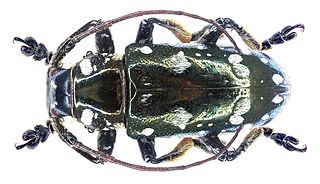
Pteropliini is a tribe of longhorn beetles of the subfamily Lamiinae.
Elongatocontoderus fuscofasciatus is a species of beetle in the family Cerambycidae, and the only species in the genus Elongatocontoderus. It was described by Breuning in 1977.
Amblymora (=Australothelais) is a genus of longhorn beetles of the subfamily Lamiinae, containing the following species:
Ancita is a genus of longhorn beetles of the subfamily Lamiinae, containing the following species:
Bucynthia is a genus of longhorn beetles of the subfamily Lamiinae, containing the following species:
Microlamia is a genus of longhorn beetles of the subfamily Lamiinae.

Rhytiphora is a genus of flat-faced longhorn beetles in the Pteropliini tribe of the subfamily Lamiinae. The genus was first described in 1835 by Jean Guillaume Audinet-Serville.
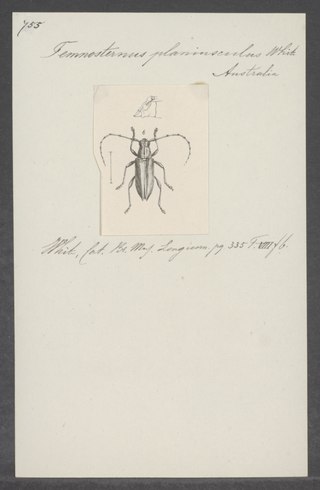
Temnosternus is a genus of longhorn beetles of the subfamily Lamiinae.
Ancita australica is a species of beetle in the family Cerambycidae. It was described by Stephan von Breuning in 1982. It is known from Australia.
Ancita similis is a species of beetle in the family Cerambycidae. It was described by Stephan von Breuning in 1938. It is known from Australia.
Bucynthia borchmanni is a species of beetle in the family Cerambycidae. It was described by Breuning in 1959. It is known from Australia.
Bucynthia marmorata is a species of beetle in the family Cerambycidae. It was described by Stephan von Breuning in 1963. It is known from Australia.
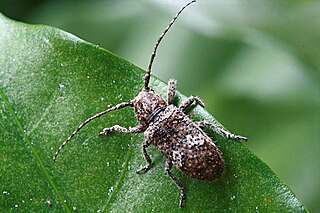
Rhytiphora bankii is a species of beetle in the family Cerambycidae. It was first described by Johan Christian Fabricius in 1775, under the genus Lamia. It is known from Australia, the Philippines, Borneo, Java, Micronesia, New Guinea, Hawaii, Moluccas, Sumatra, Vietnam, and has been introduced into Japan. The Australian species of Prosoplus were synonymised with Rhytiphora in 2013.









